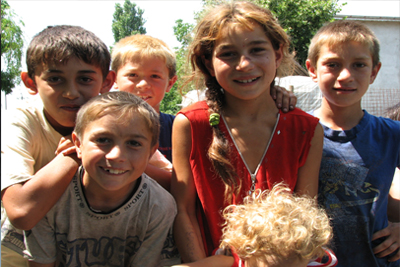Project: Roma in Serbia: How safe they feel and do they see improvements?10Apr2014
Promoting Roma Inclusion in Eastern Europe: Closing the gap in education, employment, health, and living conditions for Roma populations
 The World Bank has been supporting Roma inclusion in Eastern Europe since 2003 through promoting knowledge and data generation; providing capacity building and policy advisory; and mainstreaming Roma inclusion in country operations.
The World Bank has been supporting Roma inclusion in Eastern Europe since 2003 through promoting knowledge and data generation; providing capacity building and policy advisory; and mainstreaming Roma inclusion in country operations.Challenge
There are approximately 6–12 million Roma in Europe, equivalent to the population of a country the size of Bulgaria or Portugal. Two-thirds of Roma live in Central and Eastern Europe. They have been settled, predominantly rural populations for several centuries, and the majority of them live in poverty. The Roma population is also largely young, growing, and excluded from the labor market in countries that are otherwise aging rapidly. Already as many as one out of five labor market entrants in Bulgaria and Romania are Roma, and the figure is one out of six in Hungary and Slovakia. The growing importance of Roma in the labor force makes Roma inclusion smart economics; achieving this inclusion requires evidence-based policies and integrated interventions that are based on reliable data and information.
Solution
The World Bank focuses on three key areas to promote Roma inclusion in the context of its work on poverty and shared prosperity in Central and Eastern Europe by:
- Strengthening evidence-based policy making for Roma inclusion through comprehensive diagnostics and detailed policy advice
- Leveraging partnerships with key international actors on Roma inclusion such as the European Commission (EC) and the Roma Education Fund
- Scaling up viable approaches and mainstreaming Roma inclusion into World Bank–supported operations
Results
Support for Roma inclusion has generated the following results:
Generating evidence on Roma exclusion to inform evidence-based policy making:
- The Roma Inclusion is Smart Economics study (2011) highlights how divergent demographics (young Roma and aging majority populations), coupled with education and labor market exclusion of Roma, pose significant economic challenges for Eastern Europe.
- The “Regional Roma Survey” (2011), jointly designed by the Bank and the United Nations Development Programme (UNDP) and implemented by UNDP in the Czech Republic, Slovakia, Hungary, Romania, and Bulgaria, interviewed roughly 750 Roma and 350 nearby non-Roma households in each country. Based on the survey, the Bank developed a robust database on Eastern European Roma living conditions that is available for diagnostic work and future results monitoring and has been used in national Roma integration strategies and EC Country Specific Recommendations.
- Building on the Roma survey, the Bank produced in-depth reports on early childhood education and care: “Toward an Equal Start: Closing the Early Learning Gap for Roma Children in Eastern Europe” (2012), and financial inclusion: “Reducing Vulnerability and Promoting the Self-Employment of Roma in Eastern Europe through Financial Inclusion” (2012), accompanied by a case study of the Hungarian social microfinance facility “Kiutprogram” (2013).
- Under Reimbursable Analytic and Advisory Services (RAS), the Bank carried out comprehensive country-level analytics and provided detailed policy advice on Roma integration in Slovakia (2012) and Romania (2014), following government requests, with concrete policy recommendations on employment, education, health, housing, discrimination, and local governance.
- The study “Gender Dimensions of Roma Inclusion: Perspectives from Four Roma Communities in Bulgaria” (2014), examines how gender affects strategic life choices of Bulgarian Roma in education, employment and marriage.
- Technical assistance to the National Council for Coordination on Ethnic and Integration Issues (NCCEII) in Bulgaria reviews and strengthens local government action plans for Roma inclusion.
- The World Bank, in partnership with researchers from the Central European University, Poverty Action Lab, Roma Education Fund, Open Society Foundations (OSF), and Slovak Governance Institute, is carrying out randomized impact evaluations of programs promoting early childhood development (ECD) among Roma in Bulgaria and Slovakia.
The IBRD’s contribution to the Bank’s regional Roma work in FY14 is US$250,000.



